Our Poland itinerary: Things to do in Krakow
This is the second part of our Poland itinerary series. You can read about our Warsaw stay (days 1, 2 & 9) in this article: Three Cities of Poland: Part 1 of a 9-Day Itinerary
Day 3 – Warsaw to Krakow
Mr. TWS and I left Warsaw on an early afternoon train to Krakow. It was a pleasant journey of about 2.5 hours. Arriving in Krakow, we took Uber from the station to our hotel. After quickly checking in, we headed out on foot to explore the city, our favorite way to get to know a new place. This time, we had to add a bit of shopping for hats and gloves because of the unseasonably cold weather for which we were shamefully unprepared.
Days 4 and 5
Top things to do in Krakow
The Historic Centre of Krakow was designated a UNESCO World Heritage Site in 1978. Our activities were centered in the three areas of Krakow that comprise the historic center — Wawel Hill, Old Town, and Kazimierz. Going further afield, we took a day trip to the Nazi concentration camp and extermination center of Auschwitz-Birkenau, also a UNESCO site.
Everything that we did in the city of Krakow was within walking distance and we went everyone on foot. But I’ve heard that the public transportation system of Krakow is very good and we saw trams running regularly throughout the city center.
Wawel Hill
Wawel Royal Castle and Wawel Cathedral atop Wawel Hill can be viewed from many perspectives in Krakow. The complex of buildings creates a striking scene from below whether at night (shown below) or during the day. The views from the top of Wawel Hill are also worth seeing providing vistas over the rooftops of the city, across the Vistula River, and along the riverside path below.
Wawel Royal Castle
The history of Wawel Royal Castle spans political and cultural shifts, hostile occupation, destruction, and restoration over its centuries as home to Polish monarchs. The current Renaissance-style palace was built in the 16th century, but the original residence was built on the site in the 11th century. We took tours of the Royal Private Apartments and State Rooms which contain tapestries, art, armor, sculptures and period furnishings befitting the royal lifestyle of the kings who lived here.
Tour and ticket tips: Booking ahead for tours of the castle is recommended. There are several tours available that vary in the particular attractions seen and time required. Tickets can’t be purchased online, but advance reservations can be made by emailing a reservation form at least 14 days ahead of time. Check Wawel Castle’s website for details about the best way for you to get your tickets. We arrived in the late morning and bought tickets (mid-afternoon was the earliest available) for two tours, the State Rooms and Royal Private Apartments. These two separate back-to-back tours took a total of about two hours).
Wawel Cathedral
While waiting for the start of our tours, we strolled the castle grounds and gardens and visited the 900-year-old Wawel Cathedral and its crypt where monarchs and dignitaries are buried.
Architecture buffs will enjoy the varied styles of Wawel Cathedral, the third structure on the site. The first was built and destroyed in the 11th century, the second built in the 12th and destroyed by fire in 1305. The cathedral has been the coronation site of Polish monarchs and is the cathedral of the Archdiocese of Krakow. Pope John Paul II (1920-2005), who lived in Krakow for many years, offered his first Mass as a priest in the cathedral’s crypt and was ordained a bishop in the cathedral.
Among the kings and notables buried in the crypt are Lech Kaczyński, one of Poland’s former presidents, and his wife Maria who were killed after a Polish Air Force plane crashed outside of Smolensk, Russia, killing all 96 aboard. We happened to be in Poland during the 9th anniversary of the tragedy and witnessed commemoration events in Warsaw as well.
Old Town
Rynek Główny (Main Market)
Krakow’s Rynek Główny (Main Market), the largest medieval market square in Europe, dates back to the 13th century. With its colorful buildings, historic churches, and numerous restaurants and shops, it is one of the most beautiful we’ve seen. Horse-drawn carriages are familiar sights in the square and on the adjacent streets.
Cloth Hall
A significant feature on Rynek Glowny is the Cloth Hall, the largest building in the square which in medieval times was used for textiles and fabrics trade. On one side of Cloth Hall is the Town Hall tower (the 15th century town hall which was built when Krakow was capital of Poland no longer exits) and on the other is the 11th-century Church of St. Adalbert as well as the Adam Mickiewicz Monument.
St. Mary’s Basilica
St. Mary’s Basilica with its two Gothic towers of different heights is a key landmark on Rynek Glowny. The original church was built on the site in the 1220s. Notable attractions inside the basilica include a carved wooden altar created by Wil Stwosz, 19th-century wall paintings, and stained-glass windows from the late 14th century. It’s also a treat to be standing outside the cathedral for the hourly bugle call from the top of the tower that rises above. Visitors can also climb the 239 steps of the tower for views.
The Planty
The Planty is a 2.5-mile pathway encircling Old Town along the foundation of the old city walls. Lined with trees, green lawns, and gardens, it attracts a diverse crowd of families, lovers, fun-seekers, and visitors especially on a lovely sunny day in spring. At night, it is perfect for a romantic, dreamy stroll. During the day, it’s a great place for sitting on the benches to people watch and enjoy nature.
Kazimierz
Kazimierz is the historic Jewish Quarter of Krakow with a deep history going back to medieval times when it was a separate town from Krakow with a wall that separated its Jewish and Christian communities. By the outbreak of World War II, the area was mostly Jewish, but almost all of Krakow’s 65,000 Jews were killed during the Holocaust and Kazimierz eventually became a slum. The state of the neighborhood changed dramatically for the better when it became the setting for the movie Schindler’s List in the 1990s.
In addition to the historical sites of the neighborhood, the diverse character of Kazimierz is found in a wide selection of cafes, bars, restaurants, markets, and galleries.
Old Synagogue and Jewish Museum
Located inside the Old Synagogue (built in the 15th century, it’s the oldest synagogue in Poland), the Jewish Museum has a wealth of cultural artifacts, traditional liturgical objects, and educational exhibits. Destroyed by the Nazis who used it as a storeroom, the synagogue was restored in the late 1950s.
Remuh Cemetery
Located behind Remuh Synagogue is Remuh Cemetery, founded in 16th century. Vandalized by the Nazis in World War II, 700 gravestones have been discovered and restored.
Isaac Synagogue
Built in 1644, Isaac Synagogue is Krakow’s largest synagogue. Visitors can tour the interior to admire the original wall paintings and view an interesting exhibition, “In Memory of the Polish Jews”.
Walk along the Vistula
Each day, we had multiple opportunities to walk along the Vistula from our hotel to sights to see and things to do. During the day, there were many others either going about their daily business or touring the city just like us. At night, we felt the riverside walk with the city lights reflecting in the Vistula had a very romantic feel to it – especially in the rain.
Day 6 – Day trip to Auschwitz – Birkenau
Just 1.5 hours from Krakow is the Auschwitz – Birkenau Nazi concentration camp and extermination center. To visit Auschwitz is a poignant and intensely moving reminder of the horrors of the Holocaust. It is a somber experience to walk in the footsteps of the victims and into the places where they slept, worked, and were ultimately murdered. The museum’s exhibits include large cases with victims’ eyeglasses, shoes, human hair, and items of daily life they brought to the camp (expecting, as they were told, that they were headed for jobs and a new life rather than a death camp).
Tour tip: Although it is possible to go on your own from Krakow by taking a train (to the nearby town of Oświęcim and walking 1.5km to the site entrance) or bus (which stops across from the site entrance), we chose an organized excursion to Auschwitz. The meeting place was just a five-minute walk from our hotel, so it was very convenient. We also appreciated the express access the tour provided and not needing to worry about getting tickets when we arrived. On the bus ride there was an introductory documentary film about Auschwitz-Birkenau that was very educational.
Where we stayed
Bachleda Luxury Hotel Krakow (an MGallery by Sofitel hotel), Plac Kossaka 6 –This is a lovely new hotel (opened February 2019) with a very artistic character exhibited in the tasteful art and décor in the rooms and throughout the hotel. The staff was friendly and helpful, offering excellent suggestions for restaurants and directions as well as being quick to provide umbrellas as we left the hotel for sightseeing. (See more in “Where we ate” below.)
Where we ate
Old Town ambiance: Miód Malina, ul Grodzka 40 — Be sure to make reservations for this small, cozy restaurant on Grodzka Street. I enjoyed a traditional roast duck main course and Mr. TWS chose grilled bream among the many seafood options.
Hearty beer house food: Pod Wawelem, SW Gertrudy 26-29 — This is a bustling Polish beer hall type restaurant where I had an enormous and delicious Weiner Schnitzel. The name of the restaurant translates to “under Wawel” and indeed, it is located at the bottom of Wawel Hill.
Time for a wine break place: Palac Czeczotki, Rynek Glowny 34 — This is a contemporary bar and restaurant in a historic 15th-century building just off the main square. Here, we took a break during sightseeing one evening and had some of our favorite pierogi during a quick lunch before our scheduled castle tours.
Top-notch in-hotel restaurant: GAVI Restaurant at Bachleda Luxury Hotel, Plac Kossaka 6 — I don’t often consider dining at a hotel among the best food experiences of a trip, but I will in this case. The elegant and intimate atmosphere makes it a lovely setting and the food is excellent. We had breakfast (buffet and off the menu) here each morning and one dinner. My dinner entrée was a sumptuous roast duck with potato dumplings. It was quite possibly the best roast duck I’ve ever had and was certainly the best of three other very good roast duck dishes I had in Poland. Mr. TWS thought the zander, a freshwater pike perch, was excellent.
Inspired Polish food: Pod Nosem, Kanonicza 23 — Recommended by the hotel, this lovely, small restaurant serves creatively-prepared and presented seasonal dishes using regional products. Each course was a delight. We especially liked our table by the window overlooking picturesque Kanonicza Street during a gentle rain (shown below).
More trip tips
Bonus sightseeing tip: At Franciszkanska 3 in Old Town, look for the window of the Bishop’s Palace where Pope John Paul II would address the public when he visited the city.
Easter travel tip: If you’re traveling to Krakow during the Easter season, you will be able to enjoy the Easter Market on Rynek Glowny. Much like the famous European Christmas Markets that we love, there are many vendor booths cooking a diversity of local food specialties and selling arts and crafts.
Train tip: We used the PKP Information website to get train timetables and make reservations. There is also an app available, but I had better luck navigating the site in English on my laptop.
Next trip tips: These are a few other highly recommended Krakow attractions that I would put on our itinerary on a future visit.
- Bar Mleczny (Milk bars) — cheap, but very good cafeteria-style places to eat
- Schindler’s Factory Museum
- Ghetto Hero’s Square — monument to the Jews displaced to the ghetto
- Wieliczka Salt Mine day trip — a UNESCO site opened in the 13th century producing table salt until 2007
- Zakopane day trip — a mountain town about two hours away for hiking and visiting Lake Morskie Oko
On to Wroclaw!
There was only time to have a nice leisurely breakfast in our hotel before leaving for Krakow’s Central Station. Our train journey from Krakow to Wroclaw was about 3.5 hours — mostly through countryside, farmland and some small towns. Stay tuned for Wroclaw highlights.


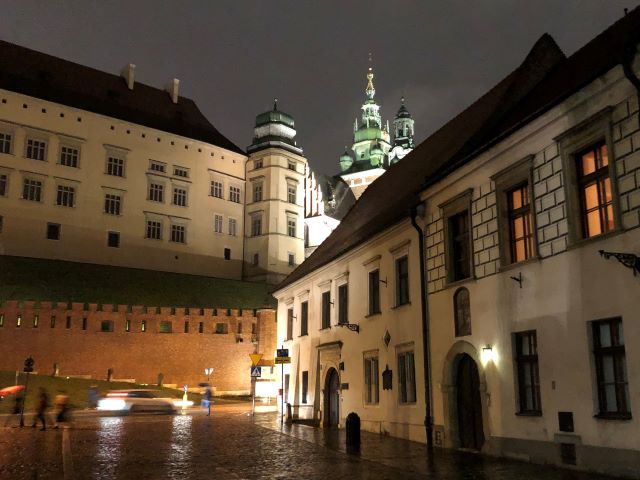
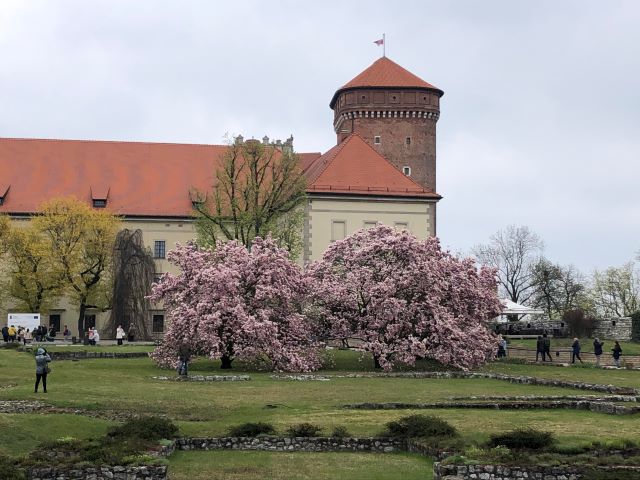
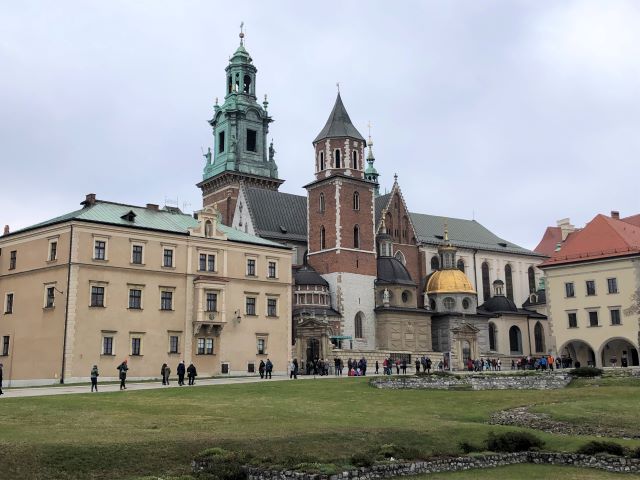
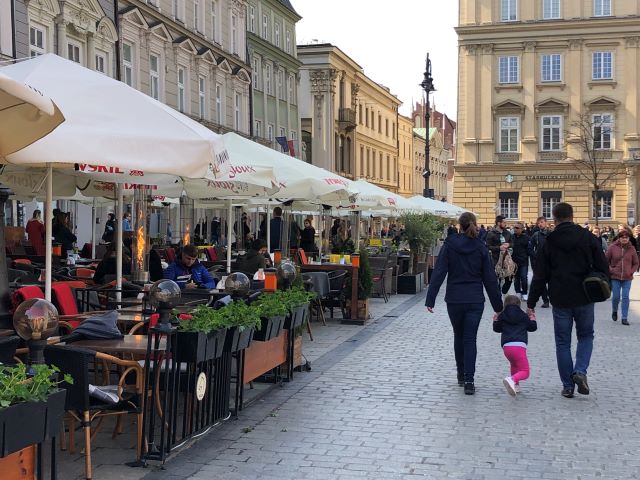
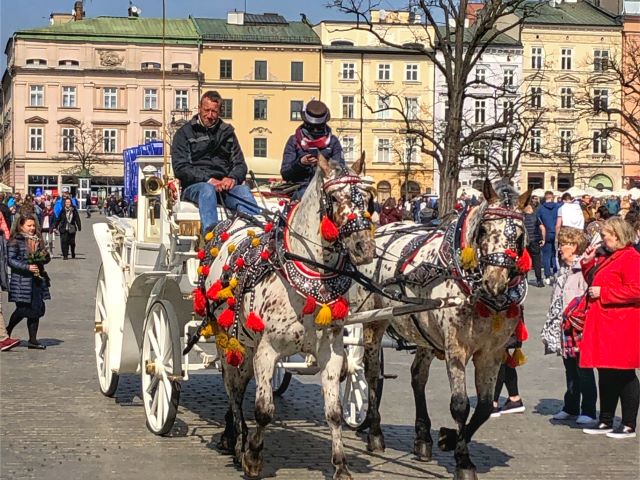
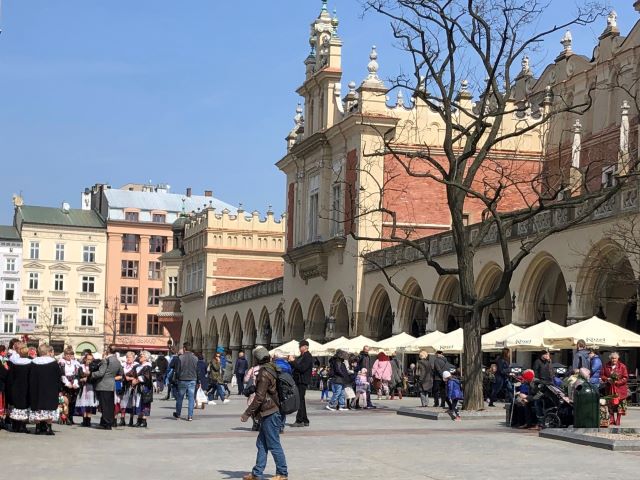
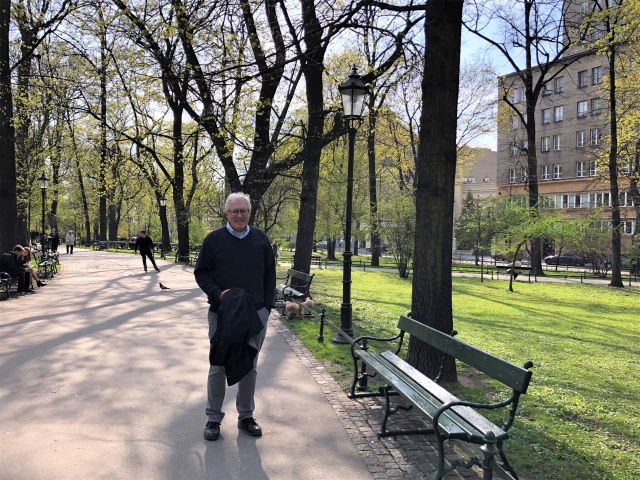
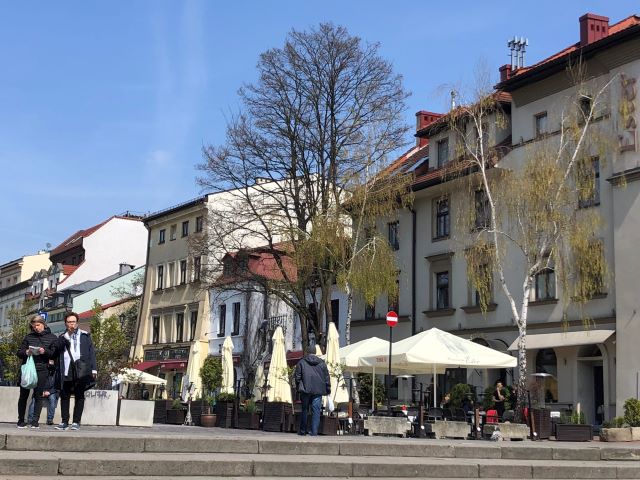
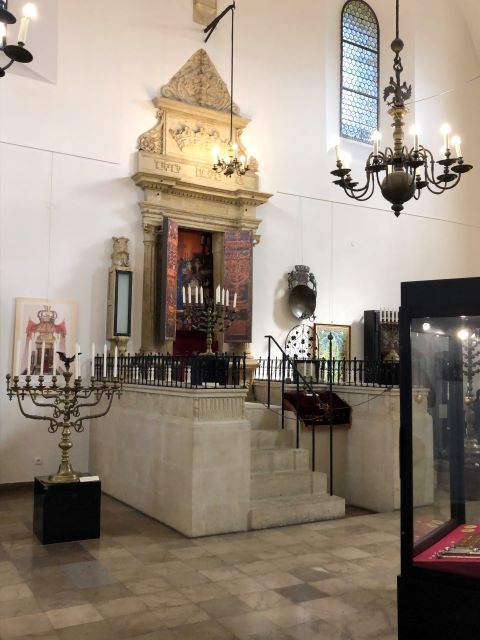
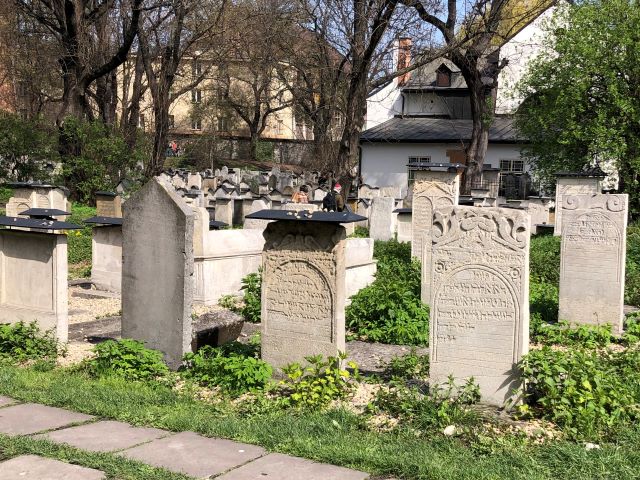
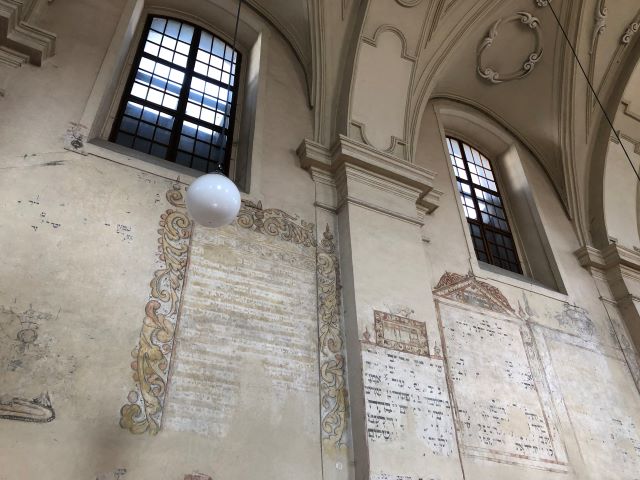



Wow. Sounds like you took advantage of every minute, even in the evening rain. You’ve inspired us to think about Krakow!
I wish we’d had a little more time there just to soak it all in.
This post brings back awesome memories. I absolutely loved Krakow unlike Warsaw. For a minute l thought..yeah.. I could live here :-). You have captured the city beautifully. Thanks for sharing. Pierogi…yum, yum.
I had the same feeling in Krakow — that I could easily live there. At least for a while. I’ve been craving pierogi ever since this trip.
Pingback: Wroclaw, Poland: Part Three of a 9-Day Itinerary | Traveling with Sweeney
Pingback: Three Cities of Poland: Part One of a Nine-Day Itinerary | Traveling with Sweeney
Enjoyed reading. Will be visiting for 5 nights april 29th 2020 with husband. So excited. Plan on visiting and walking about like you did.
Pingback: Special Mother-Daughter Travel Experiences: Part Two | Traveling with Sweeney
Pingback: Sunset in Stockholm and Other Baltic Cruise Highlights | Traveling with Sweeney